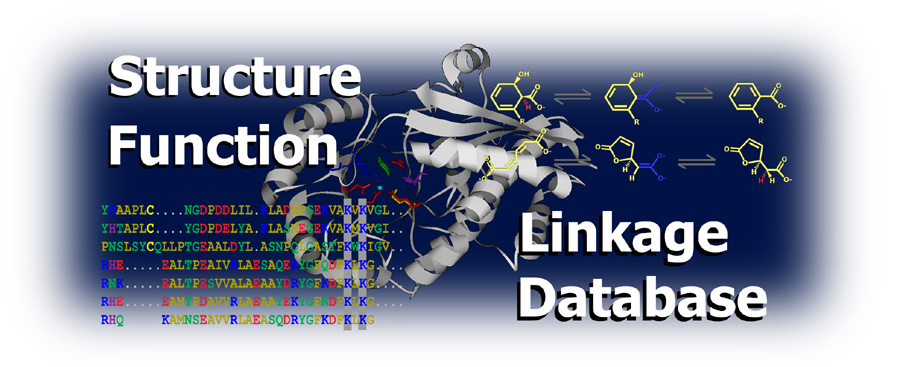
See description in
Nucleic Acids Res. 2014 Jan 1;42:D521-30


What is the Structure-Function Linkage Database (SFLD) archive?
- A hierarchical classification of enzymes that relates specific sequence-structure features to specific chemical capabilities
- An archive of data useful for investigating sequence-structure-function relationships and hypothesizing function
- More...
How can I use the SFLD archive?
(see the tutorials for examples)- Browse superfamilies in the SFLD
- Browse reactions in the SFLD
- Download archived data: sequence sets, multiple alignments, sequence similarity networks...
- Download networks associated with figures in published papers (for the Enolase (MEERCat paper), cytosolic Glutathione Transferase, Nitroreductase, and Tautomerase superfamilies)
- Questions? Contact us by email
What makes the SFLD unique?
- Superfamilies are defined by a conserved chemical capability such as a partial reaction, families by a conserved overall reaction (more...)
- Conserved partial reactions are correlated with associated active site similarities
- Large-scale summaries of relationships between and within groups of enzymes are provided as sequence similarity networks
How does the SFLD archive differ from the original SFLD?
- The archive does not contain interactive functionality found in the original SFLD, such as search capabilities
- The archive is a static snapshot of the data in the SFLD as of April 2019, and will not be updated
How can I access chemical similarity networks?
- Chemical similarity networks, such as those calculated for the MEERCat paper (PMID: 32449511) can be downloaded from the “Download Archived Data” tabs for the curated subgroups and families of Enolase, Haloacid dehalogenase, and Radical SAM superfamilies. The MEERCat paper describes an infrastructure for linking enzyme reactions and ligands to their associated proteins using the Enolase superfamily as a detailed example.


